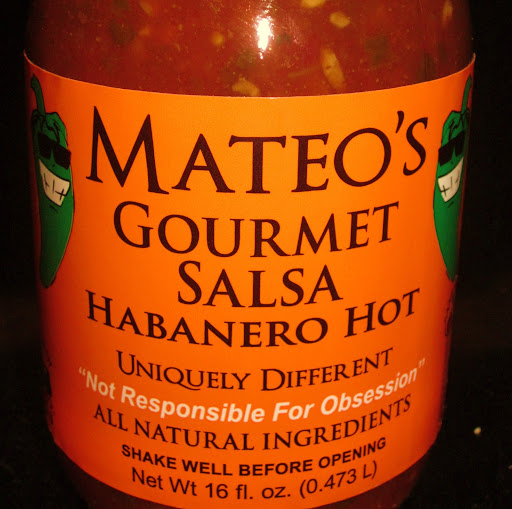Andrew B Robbins
age ~35
from Hawthorne, CA
- Also known as:
-
- Andy B Robbins
- Robbins Andrew
Andrew Robbins Phones & Addresses
- Hawthorne, CA
- Los Angeles, CA
- Pasadena, CA
- 75 Michelle Ln, Hillsborough, NJ 08844 • 9082817859
- Ithaca, NY
Specialities
Bankruptcy • Criminal Law • Domestic Relations • Personal Injury
Lawyers & Attorneys

Andrew Murdock Robbins - Lawyer
view sourceLicenses:
Virginia - Authorized to practice law 1993

Andrew William Robbins - Lawyer
view sourceLicenses:
Texas - Eligible To Practice In Texas 2012
Education:
University of Houston Law Center
Degree - Doctor of Jurisprudence/Juris Doctor (J.D.)
Graduated - 2012
Degree - Doctor of Jurisprudence/Juris Doctor (J.D.)
Graduated - 2012

Andrew Robbins - Lawyer
view sourceSpecialties:
Bankruptcy
Criminal Law
Domestic Relations
Personal Injury
Criminal Law
Domestic Relations
Personal Injury
ISLN:
912209508
Admitted:
1993
University:
East Carolina University, B.S., 1987
Law School:
Campbell University, J.D., 1993
Name / Title
Company / Classification
Phones & Addresses
AGOGY SOFTWARE, LLC
NINEVEH, LLC
President
BREAKAWAY ENTERPRISES, INC
PO Box 3534, Cerritos, CA 90703
Us Patents
-
Method For Separating Sterols From Tall Oil
view source -
US Patent:6414111, Jul 2, 2002
-
Filed:Feb 14, 2001
-
Appl. No.:09/782869
-
Inventors:Derk T. A. Huibers - Pennington NJ
Andrew M. Robbins - Trenton NJ
David H. Sullivan - Morrisville PA -
Assignee:Arizona Chemical Company - Jacksonville FL
-
International Classification:C09F 100
-
US Classification:530205, 530207, 530208
-
Abstract:A method is set forth for separating a sterol or sterol ester from crude tall oil comprising fractionating the crude tall oil into a residue fraction and a volatile fraction, wherein the temperature of the residue fraction does not exceed about 290Â C. , and wherein the residue fraction includes the sterol or sterol ester. By application of this method, which can be implemented in existing fractionating equipment or in specially designed pitch collecting apparatuses disclosed herein, the yield of sterols can exceed 50% with respect to the sterols present in crude tall oil. A method is also provided for separating unsaponifiable material from a tall oil stream comprising saponifying the stream with a mixture of sodium hydroxide and potassium hydroxide to form sodium and potassium salts of fatty acids, rosin acids, or both; evaporating the unsaponifiable material; and acidulating the unevaporated sodium and potassium salts.
-
Process And Control Strategy For The Recovery And Use Of Excess Carbon Dioxide Discharge From A High Pressure Carbon Dioxide Acidulation Process
view source -
US Patent:52833194, Feb 1, 1994
-
Filed:Jun 23, 1993
-
Appl. No.:8/082339
-
Inventors:Derk T. A. Huibers - Pennington NJ
Richard G. Grotyohann - Belle Mead NJ
Andrew M. Robbins - Trenton NJ -
Assignee:Union Camp Corporation - Princeton NJ
-
International Classification:C09F 100
-
US Classification:530209
-
Abstract:The present invention provides for the efficient recycling of carbon dioxide used in high pressure tall oil soap acidulation processes. The excess carbon dioxide used in the high pressure tall oil soap acidulation processes is recycled and contacted with an aqueous tall oil soap solution at a point before the high pressure contacting stage. Preferably, the recycled carbon dioxide is contacted in a first reactor, under pressure, to provide a preliminary tall oil mixture having an extent of acidification beyond the presence of a gel phase. Methods are provided for the monitoring of the acidulation reaction in the first reactor to maintain the extent of acidification beyond the gel phase region.
-
Method For Separating Sterols From Tall Oil
view source -
US Patent:6107456, Aug 22, 2000
-
Filed:Sep 15, 1998
-
Appl. No.:9/153728
-
Inventors:Derk T. A. Huibers - Pennington NJ
Andrew M. Robbins - Trenton NJ
David H. Sullivan - Morrisville PA -
Assignee:Arizona Chemical Corporation - Jacksonville FL
-
International Classification:C09F 700
C11D 1500 -
US Classification:530205
-
Abstract:A method is set forth for separating a sterol or sterol ester from crude tall oil comprising fractionating the crude tall oil into a residue fraction and a volatile fraction, wherein the temperature of the residue fraction does not exceed about 290. degree. C. , and wherein the residue fraction includes the sterol or sterol ester. By application of this method, which can be implemented in existing fractionating equipment or in specially designed pitch collecting apparatuses disclosed herein, the yield of sterols can exceed 50% with respect to the sterols present in crude tall oil. A method is also provided for separating unsaponifiable material from a tall oil stream comprising saponifying the stream with a mixture of sodium hydroxide and potassium hydroxide to form sodium and potassium salts of fatty acid, rosin acids, or both; evaporating the unsaponifiable material; and acidulating the unevaporated sodium and potassium salts.
-
Acidification Of Tall Oil Soap Using Carbon Dioxide
view source -
US Patent:52868451, Feb 15, 1994
-
Filed:May 20, 1992
-
Appl. No.:7/886654
-
Inventors:Derk T. A. Huibers - Pennington NJ
James W. Gillis - Yardley PA
Andrew Robbins - Trenton NJ -
Assignee:Union Camp Corporation - Wayne NJ
-
International Classification:B01D 1706
-
US Classification:530208
-
Abstract:The present invention relates to the conversion of tall oil soap to produce crude tall oil. An aqueous tall oil soap solution generated in a kraft wood-pulping process is placed in contact with carbon dioxide, under pressure, to form crude tall oil and sodium bicarbonate brine. The crude tall oil and sodium bicarbonate brine are then allowed to separate, under pressure, into a crude tall oil layer and a sodium bicarbonate brine layer. The crude tall oil layer is then separated from the sodium bicarbonate brine layer, again under pressure. The separated crude tall oil may then be further refined to yield fatty acids, resin acids, and other constituents, which are useful in numerous industrial applications, such as in soaps, lubricants, inks, adhesives, and coatings.
Medicine Doctors

Andrew F. Robbins
view sourceSpecialties:
Ophthalmology
Work:
Cincinnati Eye Institute
1945 Cei Dr, Cincinnati, OH 45242
5139845133 (phone), 5139844240 (fax)
Cincinnati Eye Institute
4760 Red Bank Rd STE 108, Cincinnati, OH 45227
5135312020 (phone), 5135310715 (fax)
1945 Cei Dr, Cincinnati, OH 45242
5139845133 (phone), 5139844240 (fax)
Cincinnati Eye Institute
4760 Red Bank Rd STE 108, Cincinnati, OH 45227
5135312020 (phone), 5135310715 (fax)
Education:
Medical School
University of Cincinnati College of Medicine
Graduated: 1973
University of Cincinnati College of Medicine
Graduated: 1973
Procedures:
Lens and Cataract Procedures
Ophthalmological Exam
Ophthalmological Exam
Conditions:
Diabetic Retinopathy
Keratitis
Acute Conjunctivitis
Cataract
Glaucoma
Keratitis
Acute Conjunctivitis
Cataract
Glaucoma
Languages:
English
Description:
Dr. Robbins graduated from the University of Cincinnati College of Medicine in 1973. He works in Cincinnati, OH and 1 other location and specializes in Ophthalmology. Dr. Robbins is affiliated with Bethesda North Hospital, Christ Hospital, Good Samaritan Hospital and UC Medical Center.

Andrew N. Robbins
view sourceSpecialties:
Diagnostic Radiology
Work:
Kaiser Permanente Medical GroupKaiser Permanente Diagnostic Imaging
4647 Zion Ave, San Diego, CA 92120
6195285000 (phone), 6195286588 (fax)
4647 Zion Ave, San Diego, CA 92120
6195285000 (phone), 6195286588 (fax)
Education:
Medical School
Georgetown University School of Medicine
Graduated: 1985
Georgetown University School of Medicine
Graduated: 1985
Languages:
English
Description:
Dr. Robbins graduated from the Georgetown University School of Medicine in 1985. He works in San Diego, CA and specializes in Diagnostic Radiology. Dr. Robbins is affiliated with Kaiser Permanente Medical Center.
Classmates

Andrew Robbins
view sourceSchools:
Mills High School Burlington CT 1995-1999
Community:
Don Formaggioni, Roger Keyes

Andrew Robbins
view sourceSchools:
Spring Bluff Elementary School Winthrop Harbor IL 1979-1984, Westfield Elementary School Winthrop Harbor IL 1985-1989
Community:
Ray Mohr, Edward Pryor

Andrew Robbins
view sourceSchools:
Springs Christian Academy Winnipeg Palestinian Territory, Occupie 2000-2004
Community:
Nichole Gatza, Lindsay Harcus, Matt Friesen, Josee Chartier

Andrew Robbins
view sourceSchools:
Ascension Academy Alexandria VA 1964-1968
Community:
Pierre Barbeau, Jan Deholl, John Ward, Dennis Beeton

Andrew Robbins
view sourceSchools:
Hillman High School Platteville WI 1950-1954

Andrew Robbins
view sourceSchools:
Northwest Rankin Middle School Brandon MS 2005-2009
Community:
Annette Tanner, Christy Boyles, Meg Taylor, Jacob Mcewen, William Ratcliffe, Lakendrick Harrell

Andrew Robbins
view sourceSchools:
Forts Ferry Elementary School Latham NY 1994-2000, Shaker Junior High School Latham NY 2000-2002

Andrew Robbins
view sourceSchools:
York Humber High School Toronto Morocco 1990-1994
Community:
Charlene Jefferson, Patti Wilson, Rick Rawluck
Flickr
Myspace
Googleplus

Andrew Robbins
Work:
Andrew Robbins Holdings LLC - Owner
Education:
Southern Methodist University - Economics
Tagline:
Loves food, and wants to create amazing products to give households what they are looking for when shopping at there local grocery store.

Andrew Robbins
Lived:
Ithaca, NY
Education:
Cornell University College of Engineering

Andrew Robbins
Work:
MSX International - Technical Writer (12)
Tagline:
I'm very happily married to my beautiful wife Tania. We have two children, Daniel and Matthew. Life is very good to me.

Andrew Robbins
Education:
University of Central Florida - Business

Andrew Robbins
Work:
Applebee's - Prep (2011)

Andrew Robbins
Tagline:
Captain of the Awesome Club

Andrew Robbins

Andrew Robbins

Andrew Robbins Jr.
view source
Andrew Robbins Jr
view source
Andrew Jamsiz Robbins
view source
Mark Andrew Robbins
view source
Andrew Lee Robbins
view source
Andrew Robbins
view source
Andrew M. Robbins
view source
Andrew Robbins
view sourcePlaxo

Andrew Robbins
view sourceTampa, FLNemko USA

Andrew Robbins
view sourceDirector, Film/TV Music at MusicBox, LLC

andrew robbins
view sourceBellSouth
Youtube
Get Report for Andrew B Robbins from Hawthorne, CA, age ~35



















